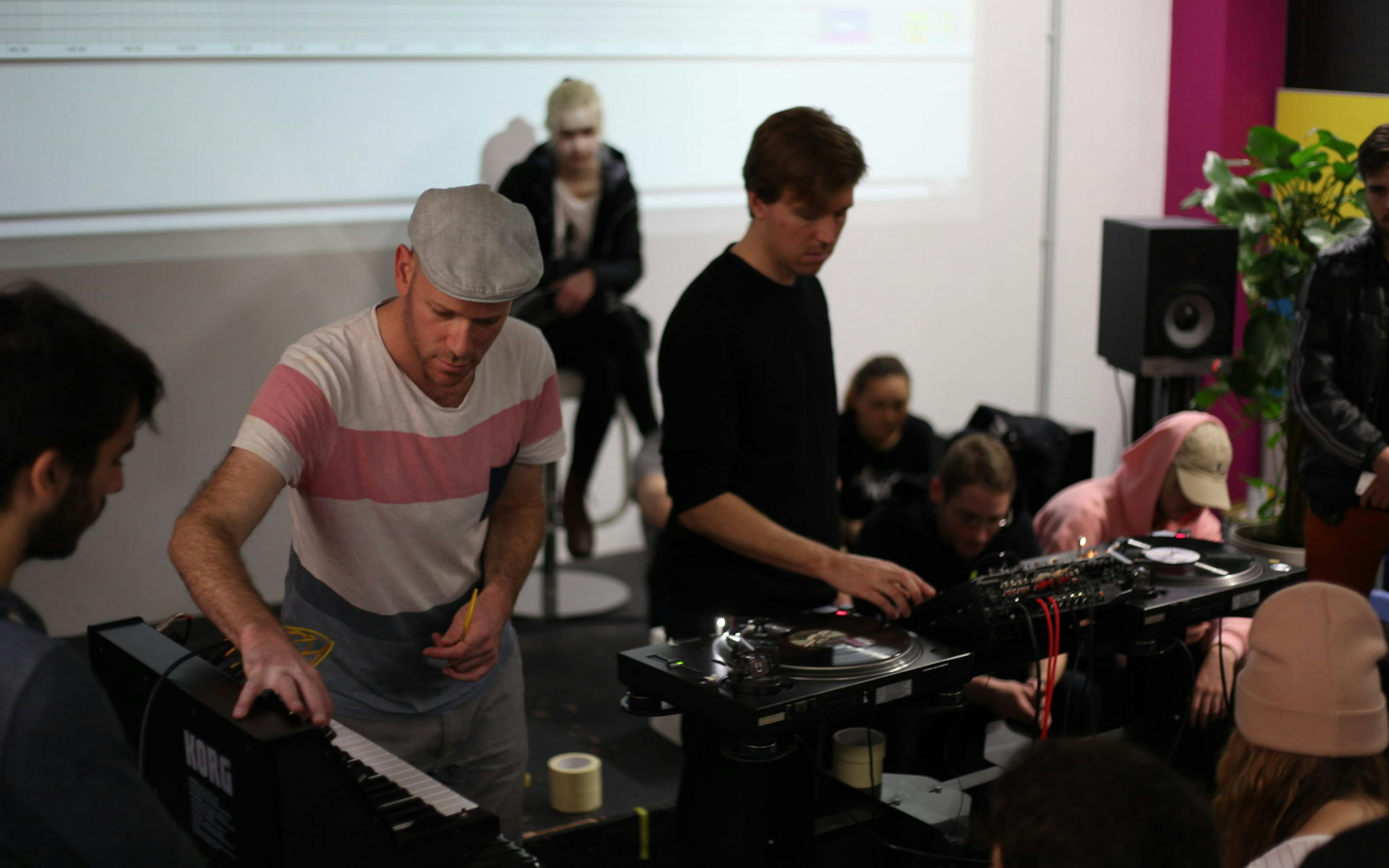
How to Use a Turntable Creatively with Eliad Wagner & Rodi Kirk
Posted on 2016-12-01T23:00:00+0000 in Catalyst
Creative turntable workshop
How can you use a turntable creatively? We held a workshop for our students to show them a few ways Electronic Music Production & Performance tutors Rodi Kirk and Eliad Wagner have come up with.
How can you use a turntable creatively? We held a workshop for our students to show them a few ways Electronic Music Production & Performance tutors Rodi Kirk and Eliad Wagner have come up with.
At Catalyst Berlin [formerly dBs Berlin], we are all about the melding of creativity and technology, so when we look at a turntable we see more than just a tool to play vinyl. There are so many ways you can use it in combination with other sound generators that result in a system that is truly unique. In order to give our students a better understanding of how to use a turntable creatively, our [former] diploma lead Rodi Kirk and the lead of our Electronic Music Production & Performance Degree Eliad Wagner, teamed up to deliver a workshop.
Eliad set up his synthesiser and Rodi his turntables and mixer. They began with the basics of how to use each machine individually; demonstrating things like how to calculate tempo by looking at rotation speed and how to create loops on records. The goal was to show how a turntable could be used as a musical instrument itself, and that this could be achieved with a few tweaks or simple connections to other forms of equipment. For example, you can use a turntable to make sound beyond what is imprinted on the record. This is done by using the mic on the needle creatively. Rodi applied some tape to his vinyls to show how the needle picks up on that sound and transmits it.
It’s also possible to use the turntable to send signals to the synth. These signals, when programmed correctly, can act as triggers for specific sounds. By setting things up in this way, you can explore deeper dimensions of sound. You can also have a more profound understanding of how the interaction between machines can generate sound. It’s a wonderful setting to discover happy accidents or stumble upon new things. So in other words, this kind of a set up can inspire novel ideas and special types of sound creation.





